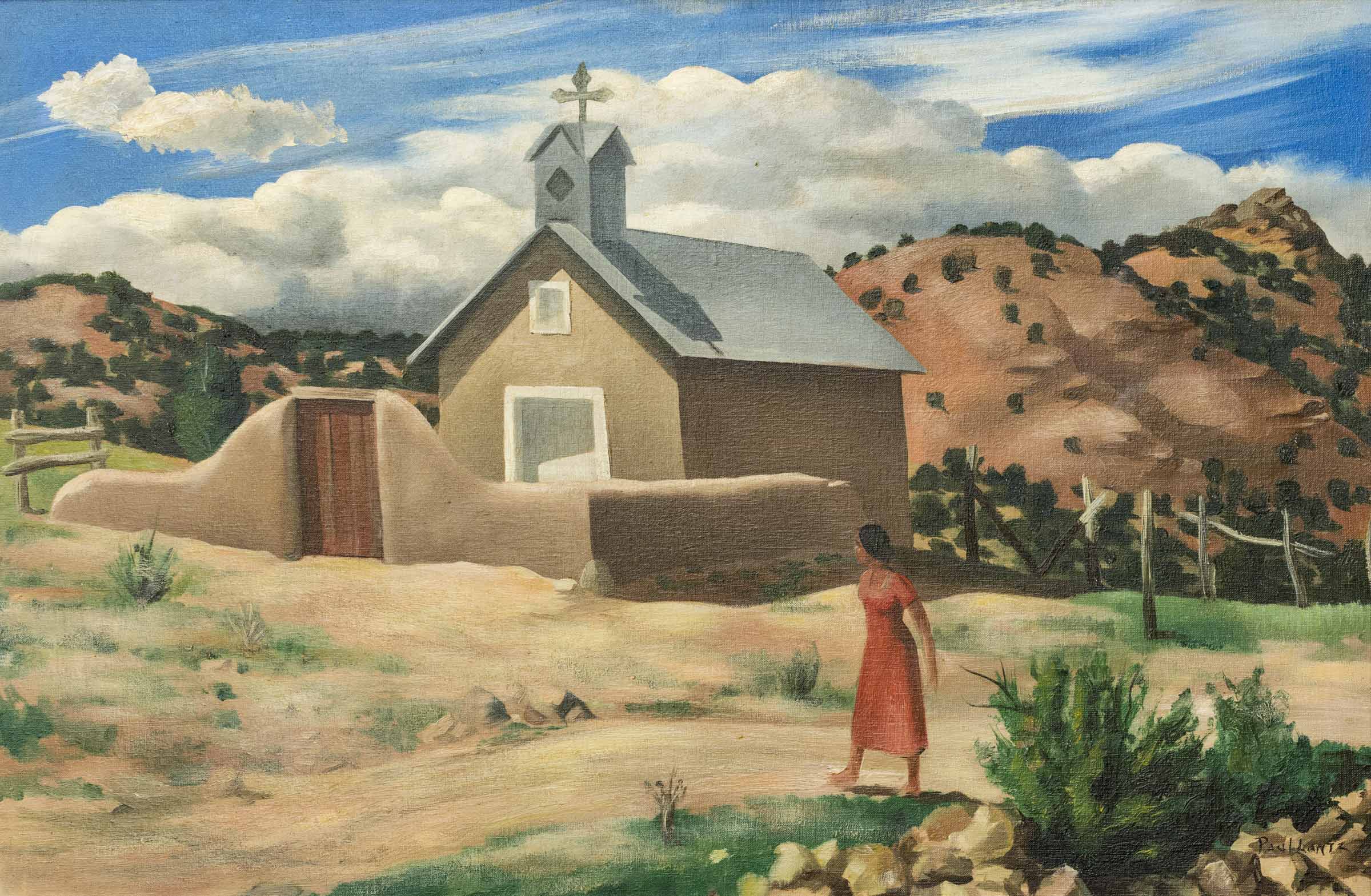Notice the play of form and texture in Untitled (Church in the Rio Grande Valley). Three different cloud formations—billowing cumulus, popcorn stratus, and wispy cirrus—fill the sky. Immediately below, the horizon consists of a peaked hill of weather-worn red rocks and dirt , against which the pitched roof and steeple of a clean-lined, uniformly built church is set. The precise geometry of the church building contrasts with the undulating curves of its thick adobe courtyard wall. In the lower right corner, the bristly branches of a green bush poke through a pile of sharp-edged, glinting rocks—which look recently placed—interrupting the otherwise smooth, elongated brushstrokes of the foreground.
The painting evokes tensions between human-made and natural, new and ancient, and the lone figure seems caught in the middle. Literally, she is mid-step, her torso turned one way and her head the other. Figuratively, in the way she is moving forward while also looking backward, she may be a reflection of the artist’s creative mindset. In the 1930s, Lantz was part of a group of modernist New Mexican artists seeking “freedom from inhibitions”1 and tradition in art.

